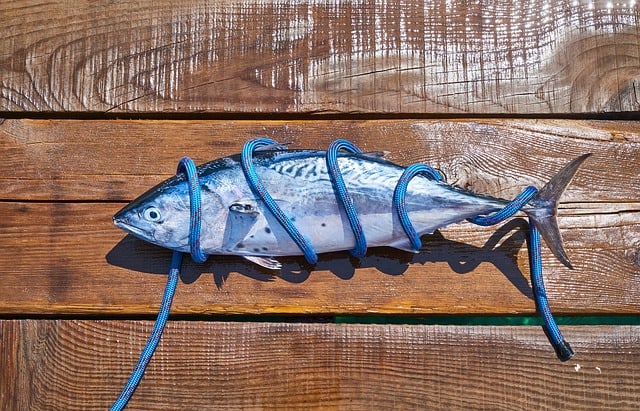
Diabetes is a disease of the pancreas that affects the production of insulin. Diabetes mellitus is a disease of the pancreas that impairs the production of insulin. More and more people are becoming ill due to excessive stress, fear, anxiety, external factors, and obesity, which means that diet and lifestyle also play an important role in promoting or preventing it.
Contents
Fortunately, there is Tuna, which can be eaten by everyone. it makes perfect, and at the same time you can conjure up quite appetizing and tasty dishes from it.
High levels of long-chain omega-3 fatty acids in the blood serum help reduce the risk of type 2 diabetes, according to research conducted at the University of Eastern Finland in Kuopio. Sources of these fatty acids are fish and fish oils, including your beloved Tuna.
People with diabetes have a very important diet. A diabetic must supervise the intake of energy values mainly carbohydrates during the day.
Tuna and Diabetes
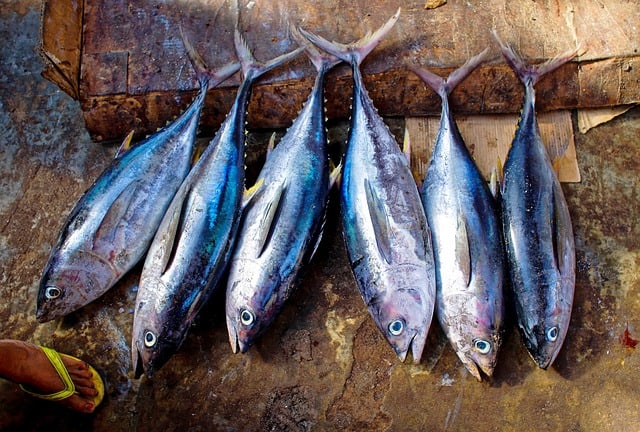
(Thunnus thynnus) is a predatory and saltwater fish of the mackerel family. Its natural habitat is the tropical waters of the Atlantic and Pacific Oceans, although it can also be found in the waters of the North Sea
Tuna is an excellent source of protein and rich in saturated and non-saturated fat, does not contain simple sugars, and therefore is a product allowed in the diet of a diabetic. In addition, this fish has a lot of vitamin D, A, B1, B3, B6 and is also an excellent source of minerals Selenium, magnesium, phosphorus, and potassium. Moreover, its Glycemic Index is 0.
GI = 0
Tuna meat is characterized by its dark pink color, which is the result of a very large network of blood vessels and a high content of myoglobin, a protein that is part of the striated muscles. Its function is primarily to store oxygen in the tissues, which enables the fish to move quickly and maintain a high body temperature.
It slows down the absorption of carbohydrates, but tuna has a lot of mercury (Mercury content in tuna is one of the most controversial topics. Mercury is a heavy metal that is highly toxic to the human body, and unfortunately, tuna contains the most of it of all marine fish. This is probably because it is a long-lived fish and is at the end of the food chain).
Mercury exposure has harmful effects, especially on the nervous system. Consumption of it in excess can also cause:
- sensory disturbances in the extremities, lips, and tongue,
- hypertension,
- atherosclerosis,
- heart disorders,
- heart attack,
- stroke.
Methylmercury readily crosses the placenta and increases the risk of abnormal fetal development and miscarriage. It has also been observed that infants who consume canned tuna have an increased risk of cerebral palsy. Mercury binds to hemoglobin in the body, which can cause neurodevelopmental and cognitive problems in children
Particularly unhealthy for diabetics, but if you have no objections to eating tuna, there's nothing to stop you, but first you have to remember to take a healthy approach to eat tuna, as eating too much can lead to high blood glucose levels several hours after eating it.
This in turn can harm your health and even worsen your condition, so to eat this fish full of micro and macro elements you should first contact your doctor to determine how much you can eat in a week. And most importantly, whether you can eat it
Important Tip
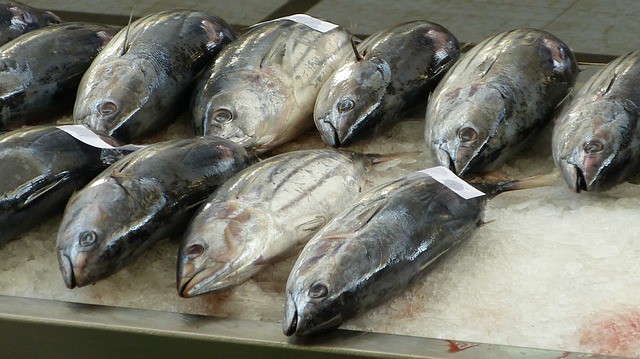
Higher concentrations of mercury are in raw tuna meat than in processed meat. However, in every sample tested, the content of this metal was still quite high. According to World Health Organization (WHO) guidelines, the weekly intake of mercury must not exceed 1.6 µg/kg body weight. This means that an adult weighing 70 kg can consume a maximum of 110 g of fresh tuna meat or 1.5 cans of tuna in its sauce per week.
It is very important to buy tuna from reliable sources because in such places the acceptable concentration of this element is tested. Symptoms caused by mercury poisoning include:
- vomiting with an admixture of blood,
- salivation,
- abdominal pain,
- burning in the esophagus,
- bloody diarrhea,
- dehydration,
- anaphylactic shock.
The high concentration of mercury in tuna meat is the reason why it is better to give up regular consumption of this fish. It is not completely prohibited because of its rich mineral content and valuable protein. On the other hand, eating meat with a high concentration of mercury has a much higher rank in its composition.
When choosing tuna to include in a diabetic diet, special care should be taken to insure that it is from a certified fishery. Certified fisheries use special hooks that allow the quick and safe release of animals caught accidentally while fishing for tunas, thanks to this risky measure the yield of endangered species is less than 0.5 percent.
Tuna Research on the Impact of Diabetics.
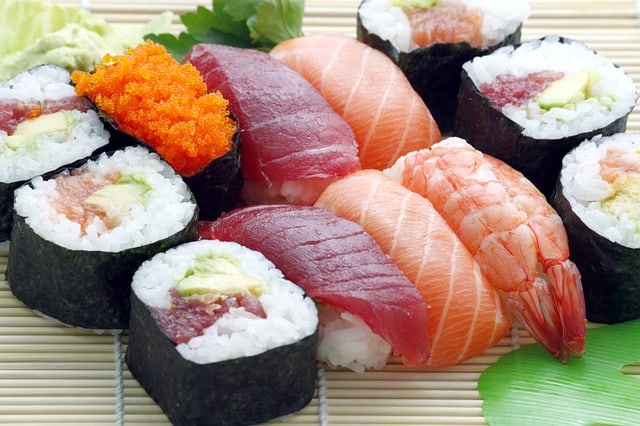
There is growing concern about the harmful heavy metal compounds contained in fish meat. For this reason, it is advisable to choose less oily species and those caught from wild shoals rather than from farms.
Take your pick: Tuna, cod, wild salmon, and wild herring. From time to time you can use canned tuna in its sauce. It is supposedly healthier than fresh tuna, but it is better to stick to fresh food if you want to improve your health.
Here are the results of the Finnish researchers' work published in the latest issue of the journal Diabetes Care.
Previous studies have shown that weight control, regular exercise, and high serum levels of linoleic acid (a group of omega-6 unsaturated fatty acids) can lower the risk of diabetes. However, findings on the effects of fish consumption and the long-chain omega-3 fatty acids contained in their meat on the risk of developing diabetes have been vague and often contradictory. Data on the positive effect of eating fish on the prevention of diabetes came mainly from studies on the Asian population, while no similar relationship was observed in European and American studies.
Researchers from the University of Eastern Finland decided to clarify this in their large experiment KIHD (Ischaemic Heart Disease Risk Factor Study). At the beginning of the study (in 1984-1989), they determined the serum levels of omega-3 fatty acids in 2212 men between the ages of 42 and 60. They divided the results into four groups: very low levels of omega-3, medium levels, and high levels.
During a follow-up lasting over 19 years, 422 men were diagnosed with type 2 diabetes. It turned out that the highest percentage of people who developed diabetes was in the group with the lowest concentration of omega-3 fatty acids. The risk difference between the two extreme groups was 33 percent.
"Our study sheds new light on the relationship between marine fish consumption and the risk of developing type 2 diabetes," say the authors of the paper in question. - A well-balanced diet should include at least two fish meals per week, and ideally, they should be oily fish."
As the scientists remind, fish rich in long-chain omega-3 fatty acids include salmon, rainbow trout, whitefish, bream, herring, anchovy, sardine, and mackerel. Coalfish and Atlantic cod, on the other hand, contain relatively little. "Maintaining an appropriate weight, increasing physical activity, and a well-balanced diet is a basis for preventing this dangerous disease."
What Kind of Fish Can I Eat if I Have Diabetes?

Fish is worth eating at every stage of life, as well as for pregnant women and those suffering from diabetes, so for a healthy approach, you should eat fish twice a week (if you have consulted your doctor or if you have no problems after eating any fish), including oily fish once a week, but not raw fish (sushi is also raw fish) or smoked fish.
In addition, it is necessary to choose low-mercury fish e.g. recommended are: Atlantic salmon, sprat, sardines, flounder, cod, Atlantic mackerel, hake, crawfish, permissible (occasionally max. 1/week) halibut, marlin, perch, monkfish, Spanish mackerel, herring, not recommended because of high mercury content: swordfish, shark, king mackerel, tuna, American eel, tilefish, Baltic salmon (smoked), sprat (smoked), Baltic herring (smoked), pike, panga, tilapia, orange roughy

Meals in Diabetic Diets.
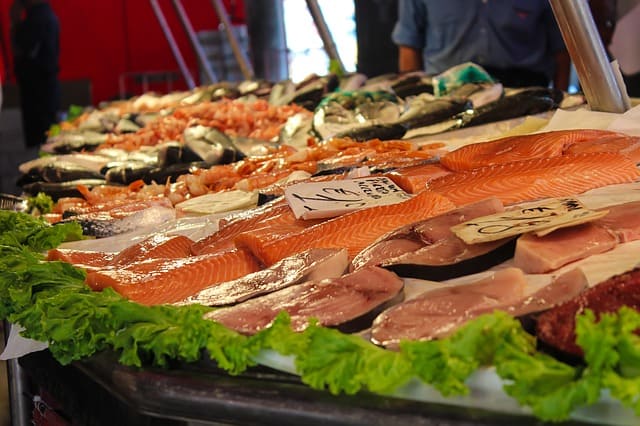
First of all, one should strive to change the quality of meals, consisting in lowering the energy content of the meals consumed. In no case, a person who changes his/her diet should be hungry. You should start with simple modifications, for example
- instead of semi-skimmed cottage cheese choose a lean one,
- instead of tuna in oil, choose tuna in its sauce,
- choose turkey ham instead of minced meat.
- Instead of frying food in deep fat one should choose baking or stew without the use of fat
Avoid thickening soups with roux and season them only with yogurt. Such small changes are an example of economic calorie management, which should also include avoiding additives that increase the calorie content of foods without increasing the feeling of satiety.





